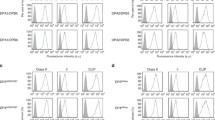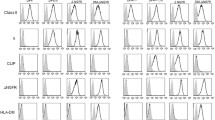Abstract.
Antigenic peptide binding to MHC class II molecules in the endocytic pathway occurs via a multifactorial process that requires the support of a specialized lysosomal chaperone called HLA-DM. DM shows both in primary amino acid sequence and quaternary structure a high homology to both MHC class I and class II molecules. Like the peptide presenting class II molecules, DM is expressed in all professional antigen presenting cells. DM catalyzes the dissociation of peptides that do not bind stably to the class II peptide-binding groove, thereby leading to the preferential presentation of stably binding antigenic peptides. The recently discovered HLA-DO molecule is mainly expressed in B cells and associates with DM, thereby markedly affecting DM function. Like DM, the genes encoding the HLA-DO heterodimer lie within the MHC class II region and exhibit strong homology to classical class II molecules. This review evaluates the unique effects of DO on DM-mediated antigen presentation by MHC class II molecules and discusses the possible physiological relevance for the B cell-specific expression of DO and its function.
Similar content being viewed by others
Author information
Authors and Affiliations
Additional information
Electronic Publication
Rights and permissions
About this article
Cite this article
van Ham, M., van Lith, M., Griekspoor, A. et al. What to do with HLA-DO?. Immunogenetics 51, 765–770 (2000). https://doi.org/10.1007/s002510000208
Issue Date:
DOI: https://doi.org/10.1007/s002510000208




